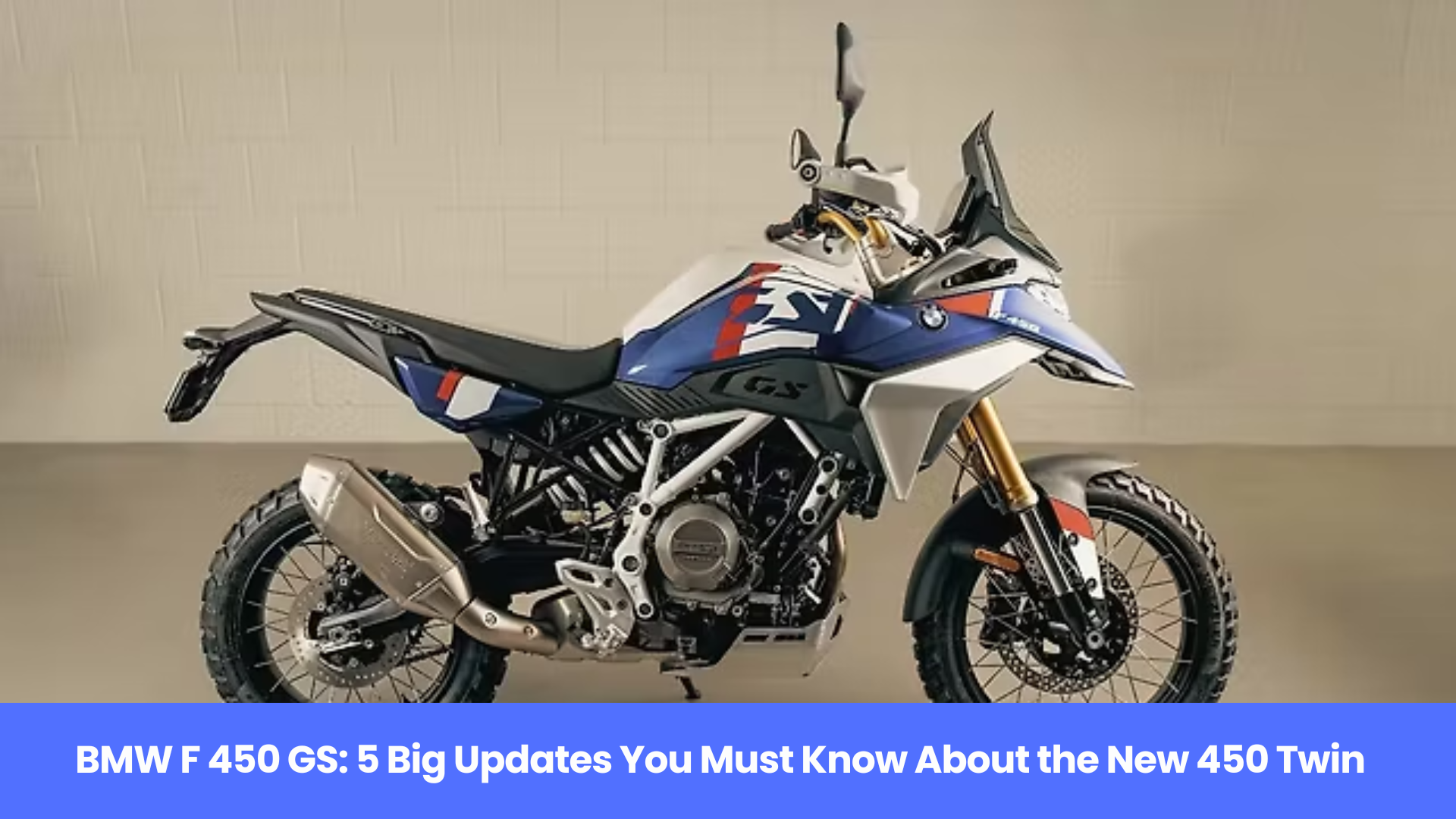BMW Motorrad has entered the compact adventure segment with the much-awaited BMW F 450 GS, a motorcycle designed for riders who want a mix of power, comfort, and practicality. This new model sits below the larger GS bikes but brings strong performance, modern features, and a fresh approach to everyday adventure riding.
Here are the five most important things you should know about BMW’s new middleweight machine.
Powerful New Twin-Cylinder Engine
The biggest highlight of the F 450 GS is its new 420cc parallel-twin engine, which BMW presents as part of the 450 family.
It produces around 47.5bhp and 43Nm, making it suitable for beginners as well as riders upgrading from smaller bikes.
The tuning focuses on giving a balance between city-friendly behaviour and strong mid-range power for long highway runs.
BMW claims a 0–100 km/h time of under 6 seconds, proving that this is not just a basic entry-level GS.
Chassis Made for Mixed Riding Conditions
BMW has built the bike around a steel tubular frame, which adds strength and durability—important for Indian road conditions where smooth tarmac, broken roads, and mild trails can come on the same ride.
Suspension comes from KYB, with 180mm travel at both ends.
This clearly indicates that the motorcycle is not a hardcore off-roader but a balanced adventure tourer.
The 19-inch front and 17-inch rear wheels also confirm this positioning.
For most Indian buyers, this setup makes more sense than tall 21-inch rally bikes that are harder to manage in city traffic.
Lightweight Feel and Practical Range
At 178 kg, the F 450 GS manages to stay lighter than many other twin-cylinder adventure bikes.
This will help new riders feel more confident in slow traffic and tight turns.
The 14-litre fuel tank may look small for long-distance touring, but BMW claims a mileage of around 26 km/l (WMTC).
This gives a practical range of 300+ km, which is enough for weekend rides without frequent fuel stops.
BMW has clearly tried to balance weight and usability—important for both city commuting and long touring days.
Strong Brakes and Modern Rider Aids
The braking system combines a 310mm front disc with Brembo caliper and a rear disc with ByBre caliper.
However, the standout feature is ABS Pro, BMW’s advanced cornering ABS—technology usually found on premium models.
Depending on the variant, the bike is also expected to get:
- Multiple ride modes
- Traction control
- Off-road ABS settings
- Quickshifter options
These features bring the “GS DNA” into a more compact and accessible segment.
Where the F 450 GS Stands in the Market
The F 450 GS will sit below the F 800 GS and R 1300 GS as BMW’s smallest adventure twin.
It is made for:
- Young riders entering the premium ADV segment
- Shorter riders needing manageable seat height
- Existing big-bike owners wanting a lighter everyday bike
- Riders upgrading from 200–400cc machines
With increasing competition from KTM, Royal Enfield, and other global brands, BMW is using the strong GS identity plus modern electronics to appeal to riders who want a premium experience without the size of a big adventure motorcycle.
Conclusion
The BMW F 450 GS shows that BMW Motorrad is serious about the compact adventure market.
With a new twin engine, balanced chassis, useful electronics, and manageable weight, the bike aims to attract a wide range of riders in India.
It offers enough power for long journeys while remaining easy to handle for everyday riding.
If BMW brings competitive pricing, the F 450 GS may become one of the most important middleweight ADVs in the country.
FAQs
What is the engine size of the BMW F 450 GS?
It uses a newly developed 420cc parallel-twin engine, tuned to deliver about 47.5bhp.
Is the BMW F 450 GS suitable for beginners?
Yes, the power delivery, weight balance, and electronics make it beginner-friendly while still exciting for experienced riders.
Does the F 450 GS get off-road features?
It gets features like ABS Pro, traction control, ride modes, and long-travel suspension—suitable for mild off-roading.
What type of riders is BMW targeting with this model?
Young riders, shorter riders, and those upgrading from 250–400cc bikes, along with big-bike owners wanting a lighter second bike.
What is the expected fuel range?
With a claimed 26 km/l, the bike may offer around 300–320 km on a full tank.

